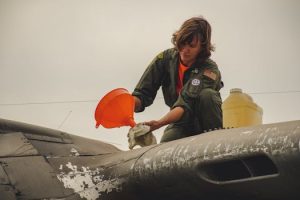Automotive Photography: Capturing Mechanical Beauty Through Lenses
Cars are a symbol of human ingenuity and engineering mastery. With their sleek exteriors, intricate machinery, and powerful engines, they have captivated the hearts and minds of car enthusiasts for decades. And what better way to capture their beauty than through the art of automotive photography? It takes a skilled photographer, armed with the right equipment and techniques, to do justice to the mechanical marvels on wheels. In this article, we will explore the world of automotive photography and how it enables us to capture the mechanical beauty of cars through our lenses.
The Art of Automotive Photography
Automotive photography is more than just a pretty image of a car. It is an art form that combines technical expertise, artistic flair, and a love for cars. A successful automotive photograph not only captures the beauty of the car but also conveys its character, design, and engineering. It is a challenging genre of photography that requires a deep understanding of vehicles, lighting, and composition. With the right skills and techniques, automotive photography can produce stunning images that truly showcase a car’s beauty.
The Importance of Understanding Cars
To capture the true essence of a car, a photographer must have a thorough understanding of how cars work. This not only includes the mechanical aspects but also the design and styling elements. Knowing the intricacies of a car’s engine, suspension, and even the materials used in its construction can help the photographer highlight these details in their images. A deep understanding of cars also allows the photographer to anticipate and capture their movement, giving their photos a sense of dynamism and power.
Mastering Lighting and Exposure
Lighting is crucial in all forms of photography, and automotive photography is no exception. It can make or break a photo, as it significantly impacts the mood, atmosphere, and details in the image. The right lighting can bring out the car’s curves, lines, and textures, creating a three-dimensional effect that makes the car jump out of the photo. On the other hand, poor lighting can make the car look flat and uninteresting. A skilled automotive photographer has a keen eye for lighting and knows how to manipulate it to their advantage.
Exposure is another critical aspect of automotive photography. It refers to the amount of light that enters the camera’s sensor, and it plays a vital role in determining the brightness, contrast, and colors in an image. A photographer must understand the exposure triangle- aperture, shutter speed, and ISO- to create a well-exposed image. They must also be familiar with techniques such as bracketing and long exposures, which can add depth and drama to their photos.
The Art of Composition
Composition is the arrangement of elements within a photograph, and it is crucial in automotive photography. A skilled photographer knows how to use the car’s shape, lines, and reflections to create a visually appealing image. They also carefully choose the angles, perspectives, and backgrounds to complement the car and tell a story. The rule of thirds, leading lines, and symmetry are just some composition techniques that can make an automotive photo stand out. While it may take time and practice to master, good composition can elevate a photo from ordinary to extraordinary.
Tools of the Trade
Apart from their knowledge and skills, automotive photographers also rely on specific tools and equipment to capture stunning images of cars. Here are some of the essential items that every automotive photographer should have in their arsenal:
Camera and Lenses
A good camera is the backbone of any photography genre, and automotive photography is no exception. While any camera can capture decent images, a DSLR or mirrorless camera with manual controls and interchangeable lenses is highly recommended for automotive photography. As for lenses, a wide-angle or ultra-wide-angle lens is ideal for capturing the entire car in the frame, while a telephoto lens can help in creating detailed shots of specific parts of the car.
Lighting Equipment
While natural light is the preferred choice for many automotive photographers, it is not always available or ideal. In such cases, artificial lighting is necessary to create the desired effect and highlight specific areas of the car. Strobes, flashes, and continuous lights are common lighting equipment used in automotive photography, and they can be manipulated to produce soft or harsh light, depending on the photographer’s creative vision.
Accessories
There are several accessories that automotive photographers use to enhance their images. Tripods help in keeping the camera steady and are especially useful for long exposures. Reflectors can be used to bounce light on a specific part of the car, and polarizing filters can reduce glare and reflections for more defined images.
Conclusion
Automotive photography is a challenging yet immensely satisfying genre of photography that allows us to capture the mechanical beauty of cars through our lenses. Whether you are a car enthusiast, a photography enthusiast, or both, mastering the art of automotive photography can open up a world of creativity and endless possibilities. So, grab your camera, find your perfect lighting, and capture the mechanical beauty of cars like never before!





